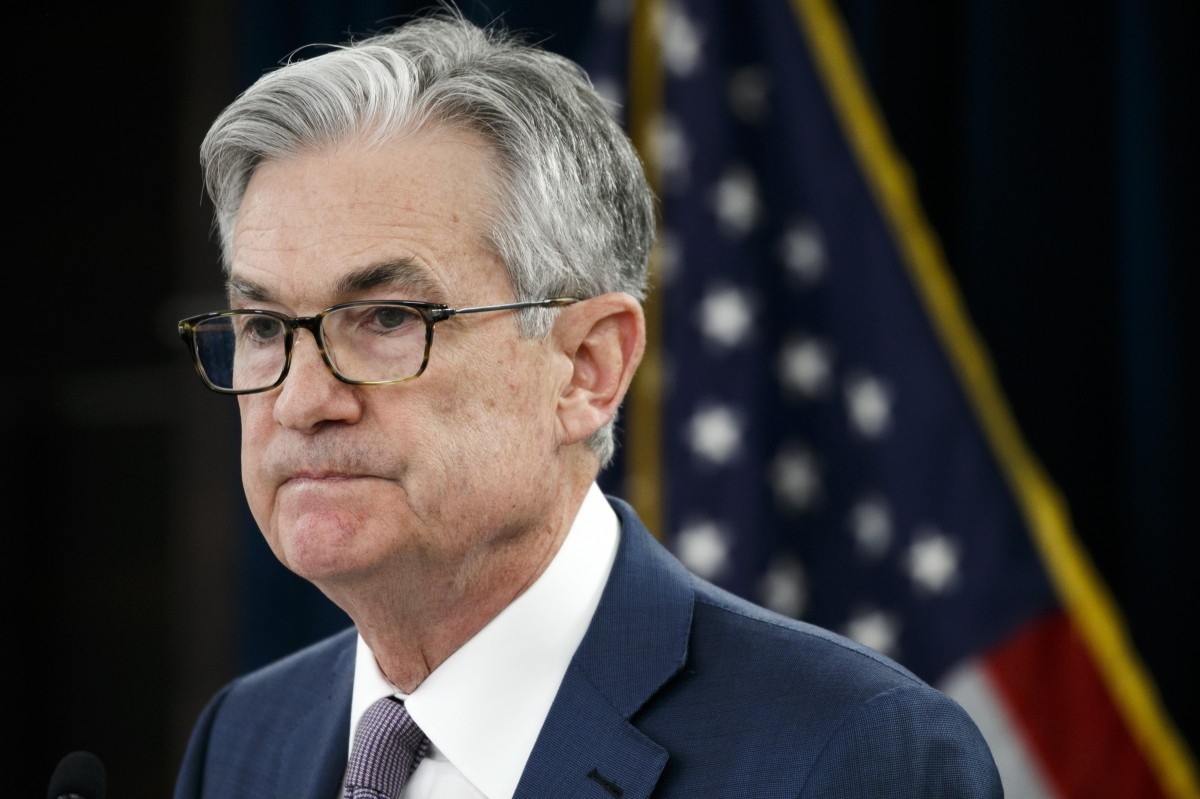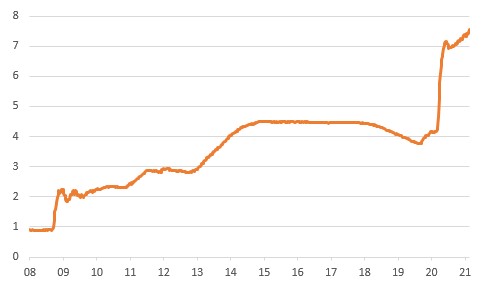US: Fed Optimism Grows, But The Buying Will Continue
Federal Reserve Chair Jerome Powell acknowledged the better news flow, but cautioned that the recovery "remains uneven and far from complete". Given this situation and the revised monetary policy goals, the Fed remains committed to supporting the economy with QE continuing apace. We suspect that the pressure for change will build through the second quarter with a tapering of QE looking increasingly before year-end.

Fed Chair, Jerome Powell
The Fed to keep the presses printing
Jerome Powell's testimony surrounding monetary policy conveys a message of cautious optimism but commits the Federal Reserve to ongoing ultra-loose monetary policy. The key passage is that "The economy is a long way from our employment and inflation goals, and it is likely to take some time for substantial further progress to be achieved". Consequently, there is little sign they are preparing us for an imminent QE taper.
Moreover, the testimony reiterates that the Fed's new strategy includes a greater emphasis on maximum employment being a "broad and inclusive" goal – thereby meaning the labor market will be allowed to run hotter to ensure all in society benefit. There is also the highlighting of the language change that the target is now no longer symmetrical with a focus on "shortfalls' rather than "deviations".
Again there is a heavy emphasis on the change to the Fed’s inflation goal, which is now to ensure it "averages 2% over time". While there is a little description of how the Fed sees inflation evolving Powell suggests policy will focus on ensuring inflation expectations remain anchored.
Federal Reserve balance sheet - assets (USD tn)

Source: Macrobond, ING
Seeking a lid on Treasury yields
Powell steered clear of commenting on the recent rise in Treasury yields in the prepared text, unlike ECB Chief Christine Lagarde, who yesterday warned that higher government borrowing costs could make financing conditions less favorable and “accordingly the ECB is closely monitoring the evolution of longer-term nominal bond yields”.
Nonetheless, there will also be a concern within the Fed that if it continues and threatens to become disorderly it could have an adverse impact on the economy and financial markets more broadly.
He will no doubt be hoping that his soothing words on anchored inflation expectations and an ongoing supportive policy stance will be enough to provide some calm. Nonetheless, his view that “substantial further progress is likely to take “some time” to be achieved will, in our view, be increasingly challenged in coming months.
"Substantial progress" could soon be achieved
What is “substantial further progress”? It is a very vague statement, but we assume it involves several targets that include the imminent prospect of herd immunity, the economy re-opening, and jobs being created plus the emergency of price pressures. All could materialize in the second quarter.
This suggests the June 16th FOMC meeting, where a new round of forecasts will be presented, could be the first time the Fed feels serious pressure to take its foot off the accelerator and signals a tapering of asset purchases is likely to be on its way before the end of the year. After all, “substantial further progress” implies a journey, rather than an end result.
A taper with a twist?
Given the fears of a potentially disruptive taper tantrum 2.0, we strongly suspect that when the Fed does start to taper asset purchases it will be gradual and involve a “twist” operation, similar to how the Bank of Canada’s policy has evolved. Last October the BoC “recalibrated” its QE program by lowering its weekly asset purchases from C$5bn to C$4bn, but shifted the purchases towards the longer end of the yield curve. They argued that this was a more effective use of resources since the long end of the curve has a “more direct influence on the borrowing rates that are most important for households and businesses”.
The short-end of the US yield curve will remain pinned down by the Fed’s forward guidance that a rate hike is unlikely before 2024 while shifting a greater proportion of asset purchases to the longer end of the curve can mitigate against a sharp steepening of the yield curve.
The Fed may feel the need to announce even greater flexibility. This could be done by not sticking rigidly to a monthly target for asset purchases and instead focus on a range for asset purchases by a certain date. They would be signaling they are prepared to halt the taper and actually increase purchases on a temporary basis, depending on market circumstances. This could reduce the likelihood of a major sell-off in Treasuries and help dampen volatility. Given these options there is no reason to think that tapering couldn't happen before the end of the year.
Disclaimer: This publication has been prepared by ING solely for information purposes irrespective of a particular user's means, financial situation or investment objectives. The information does ...
more


